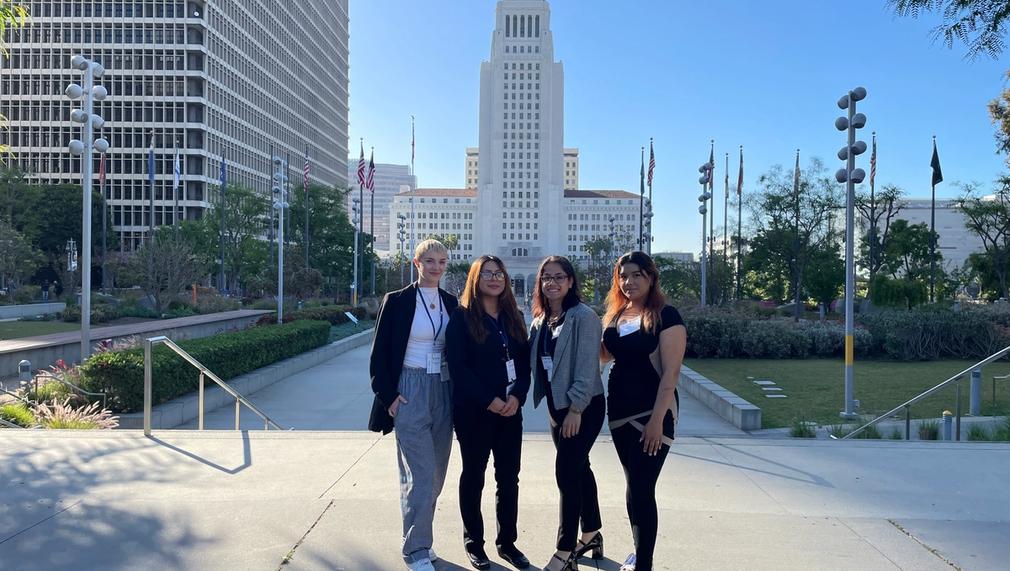Urgency To Act: Foster Care Crisis
Urgency to Act is NFYI’s bold new national campaign aimed at transforming the child welfare system through youth-led policy change. Grounded in lived experiences of foster youth, this campaign focuses on 6 urgent priorities —not just problems— with solutions created by those most affected. It’s a call to action for communities and policymakers to champion meaningful, immediate change. Together, we’re advocating for a better system and are building one that empowers youth, strengthens families, and creates lasting impact for generations to come.

What is the primary issue area that your application will impact?
Support for foster and systems-impacted youth
In which areas of Los Angeles will you be directly working?
City of Los Angeles (select only if your project has a citywide benefit) County of Los Angeles (select only if your project has a countywide benefit)
In what stage of innovation is this project, program, or initiative?
Pilot or new project, program, or initiative (testing or implementing a new idea)
What is your understanding of the issue that you are seeking to address?
Los Angeles County has the largest child welfare system in the nation, with over 30,000 children in foster care and thousands more who have aged out without permanent support. Many enter care due to preventable issues like poverty and housing instability. Foster care is meant to protect children, but it often reflects deeper systemic failures. Our work centers on prevention—strengthening families to avoid removal, supporting youth in care, and ensuring housing stability as a key tool in preventing both homelessness and family separation. Each month, about 100 foster youth age out in LA County; 23 will become unhoused immediately. Former foster youth face high risks of chronic health conditions, substance use, and PTSD. Though 84% aspire to attend college, only 3–4% earn a four-year degree. Investing in prevention, permanency, and housing helps reduce system involvement and builds stronger futures for transition-age youth.
Describe the project, program, or initiative this grant will support to address the issue.
Elevating Lived Experience Through Storytelling
Personal stories drive change. By centering lived experience, we humanize complex policy issues, inspire action in our communities, and educate decision makers.
Building Leadership & Advocacy Skills
Developing the next generation of leaders ensures that those with firsthand experience in foster care can influence policy, shape solutions, and lead reform efforts.
Creating Spaces for Collaboration & Policy Impact
By convening key stakeholders and engaging the broader public, we ensure that the urgency of foster care reform remains at the forefront of local and national conversations.
Driving Legislative & Policy Change
Clear, research-backed policy recommendations—paired with strong public support—create the foundation for meaningful legislative change. By informing decision-makers and mobilizing allies, we turn advocacy into concrete action.
Describe how Los Angeles County will be different if your work is successful.
Elevating Lived Experience Through Storytelling
Outcomes: In three years, policymakers, service providers, and the general public will have a deeper understanding of foster youth experiences:
Building Leadership & Advocacy Skills
Outcomes: Within three years, NFYI-trained youth advocates will be testifying before Los Angeles County and City decision makers, Congress and lead local policy initiatives.
Creating Spaces for Collaboration & Policy Impact
Outcomes: In three years, local and national decision makers will be actively engaging with an increasing number of foster youth.
Driving Legislative & Policy Change
Outcomes: Within three years, no foster youth will age out of care and into homelessness, have access to quality mental health services, parenting youth will have access to flexible and affordable child care, foster youth will receive quality education and workforce development training and access to substance abuse treatment programs.
Approximately how many people will be impacted by this project, program, or initiative?
Direct Impact: 50
Indirect Impact: 200